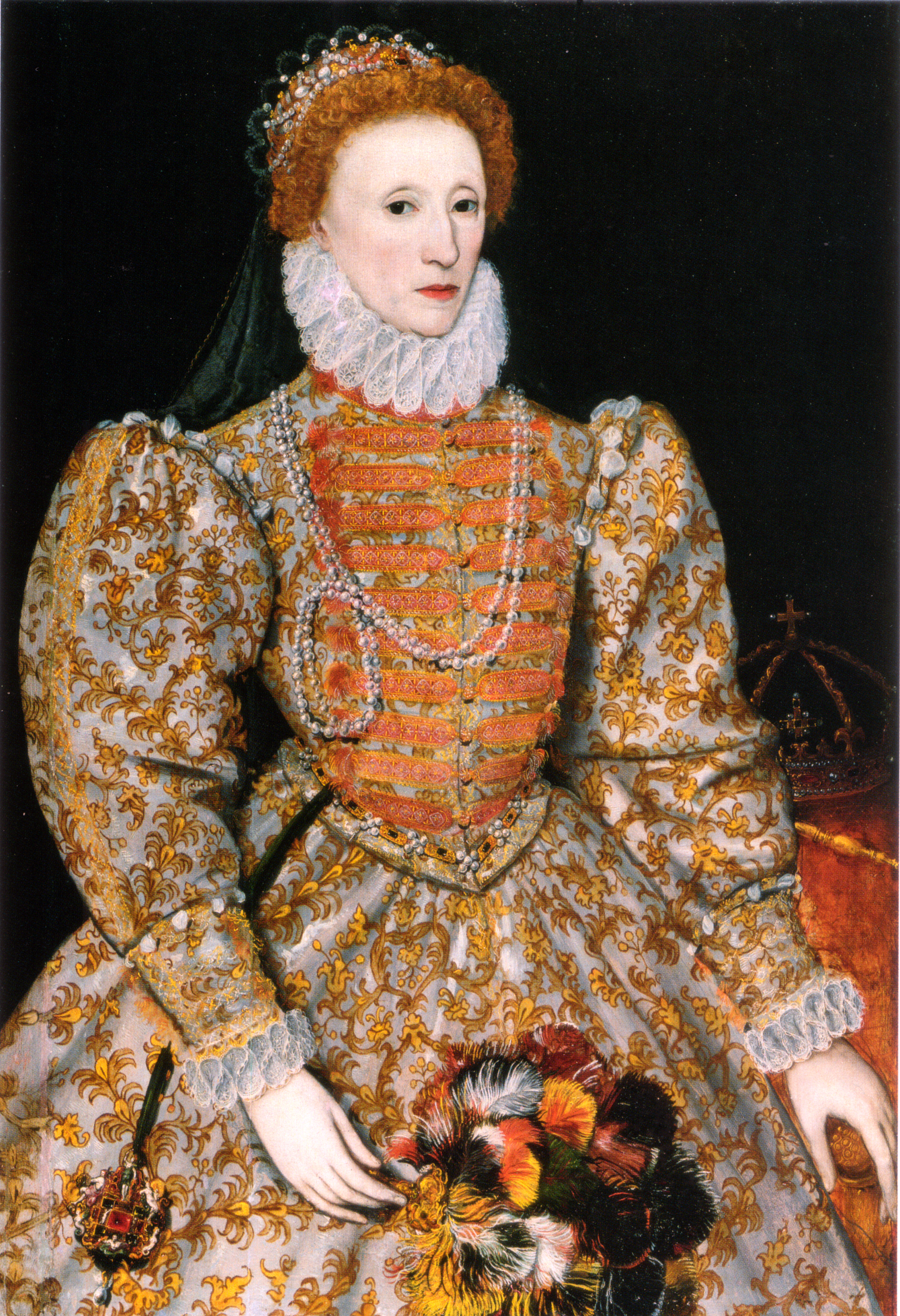I believe that the origin of an American prejudice against Spanish speakers, racist in character, lies in Elizabethan England. During the Middle Ages England had a tense relationship with France, going back to the twelfth century, when the Angevin Empire, comprised of England and much of the western part of what is now modern France, kept a rump France at bay. As those French territories gradually became a part of France proper the English fought to keep the lands in English possession. The port of Calais remained the only English toehold on the continent until it too was lost under Mary I (r. 1553-1558), never again to return to English possession. The so-called “Hundred Years War," fought intermittently between England and France from 1337 to 1453, was largely an effort to regain those English territories in France, to no avail.
  |
| Elizabeth I (r. 1558-1603. Henry VIII (r. 1509-1547) |
The tension with France meant that England leaned toward Spain, diplomatically, although relations with France were maintained. The first wife of Edward I (r. 1272-1307) was French while his second wife was Spanish.
As the Middle Ages morphed into the Renaissance things changed. Henry VII (r. 1483-1509) leaned more toward Spain, negotiating a Spanish marriage for his eldest son, Arthur. Catherine of Aragon was married to Arthur for less than a year when he died of what some scholars think was the sweating sickness. After languishing in England for years, Henry’s second son, who became Henry VIII (r. 1509-1547) married Catherine after he ascended to the throne. Catherine had a number of pregnancies but only one child, Mary, survived. Henry famously broke from Rome, divorced Catherine and married Anne Boleyn, with only one daughter, Elizabeth, surviving. Four wives later Henry had two daughters and a son, Edward, all of whom reigned over England, Elizabeth’s reign lasting the longest (1558-1603).
During Henry’s reign his court bounced between relations with Spain and the Holy Roman Empire, ruled by the Hapsburg Charles V, and France, ruled by two monarchs during Henry’s reign. Henry would favor one or the other based on what he thought he could get out of either. It was never out of friendship.
 |
| Philip II (r. 1556-1598 Spain) |
By the time Elizabeth I took the throne the relationship with Spain had
soured considerably. Spain had built up an international empire in the
New World and Asia under Charles’ son, Philip II, and England was
jealous. During Elizabeth’s reign the first British Empire began to
form. The major focus was on the New World. In the century since
Columbus’ disastrous encounter with the peoples of South America and the
Caribbean, Spain had dominated this region. Expeditions to this region
under the auspices of Sir Walter Raleigh and others attempted to get a
toehold on the American continents. Raleigh’s attempt to establish a
colony on the Virginia (now North Carolina) coast at Roanoke in 1585 and
again in 1587 failed. The tensions between Spain, partly over
state-sanctioned piracy and partly over the execution of Mary Queen of
Scots resulted in the massive attempt by Spain to conquer England. The
Spanish Armada of 1588 failed miserably, and the English sat on the edge
of their collective seats for the next decade expecting that the
Spanish might try again. There were small incursions but nothing on the
scale of the Spanish Armada.
One of the factors in the English animosity toward Philip and Spain was that he had been co-regent with his wife, Mary I of England, who briefly returned England to Catholicism. Many in England did not like the idea of a Spanish king.
The English case against the Spanish revolved around several issues. First, they were Catholic, and wanted to overthrow Elizabeth, a Protestant. Second, they were cruel, in English estimation, as I will discuss in my next post.



No comments:
Post a Comment